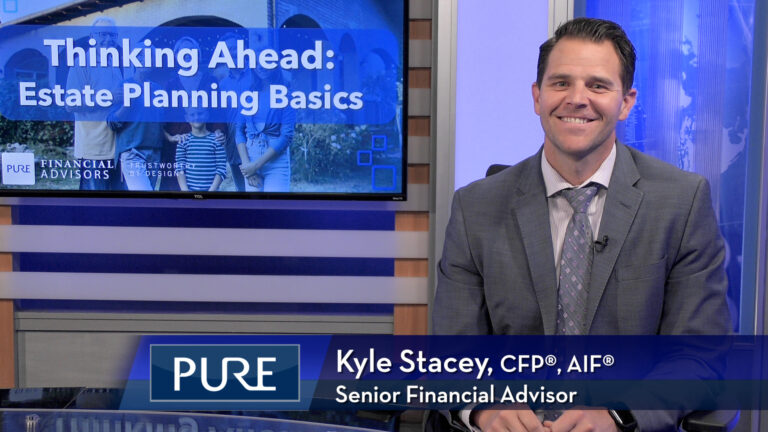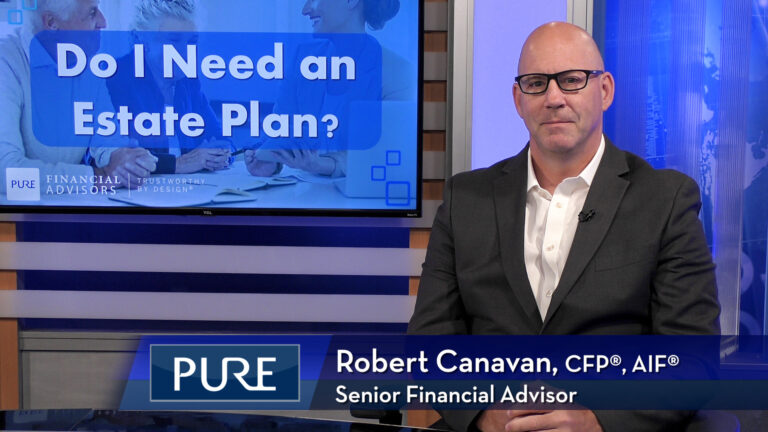Tax season is fast approaching and now is a great time to get started to be ahead of the curve. Pure’s Financial Planner, Nick Rose, CFP®, AIF®, will guide you through a simple checklist designed to navigate through tax strategies to help you retain more of your hard-earned dollars.
FREE GUIDE | End of Year Tax Strategies
Transcript
Here is a checklist of what you can do before the end of the year to prepare for tax season.
Know your filing status:
There are several ways to file your taxes, and each filing comes with different tax bracket thresholds, deductions, and tax credits. Depending on your marital status and dependent situation, you can file as one of the following: single filer, head of household, married filing separately, or married filing jointly.
Review retirement contributions and distributions:
Pay attention to your annual contribution limits for employer-sponsored retirement accounts such as 401(k)s and 403(b)s. For most employees, the limit is $22,500 for 2023. There is also an additional $7,500 catch-up contribution allowed for employees over the ages 50 and over. You may also be eligible to deduct a contribution to a traditional IRA. If you are required due to age, be sure to take the required minimum distributions (RMDs) out of your retirement accounts.
Decide: Itemized or Standard Deduction:
Add up your potential itemized deductions before the end of the year to determine whether itemizing or taking the standard deduction on your tax return is more beneficial.
Tax Credits and Deductions:
There are many tax credits available to individuals and businesses, but the ones you can take by the end of the year depend on your specific situation. Additionally, you must donate before the end of the tax year to claim a charitable tax deduction in that same year
Bunch medical expenses in one year:
If your medical expenses for the current year border on the minimum threshold of 7.5% of your adjusted gross income, try to squeeze some planned future medical expenses into the current year to maximize your tax savings.
Scheduling certain expenses for the higher-tax–bracket year:
If you anticipate a change in income tax brackets bunching or spreading certain expenses across tax years can be a wise tax-planning strategy.
Tax laws are complex and subject to change, so it’s always a good idea to consult with a tax professional for guidance on your specific situation. So, take advantage of our free tax analysis to see if you can keep more of your hard-earned dollars.
Subscribe to our YouTube channel.
IMPORTANT DISCLOSURES:
• Investment Advisory and Financial Planning Services are offered through Pure Financial Advisors, LLC, a Registered Investment Advisor.
• Pure Financial Advisors LLC does not offer tax or legal advice. Consult with your tax advisor or attorney regarding specific situations.
• Opinions expressed are subject to change without notice and are not intended as investment advice or to predict future performance.
• Investing involves risk including the potential loss of principal. No investment strategy can guarantee a profit or protect against loss in periods of declining values.
• All information is believed to be from reliable sources; however, we make no representation as to its completeness or accuracy.
• Intended for educational purposes only and are not intended as individualized advice or a guarantee that you will achieve a desired result. Before implementing any strategies discussed you should consult your tax and financial advisors.
CFP® – The CERTIFIED FINANCIAL PLANNER™ certification is by the Certified Financial Planner Board of Standards, Inc. To attain the right to use the CFP® designation, an individual must satisfactorily fulfill education, experience and ethics requirements as well as pass a comprehensive exam. Thirty hours of continuing education is required every two years to maintain the designation.
AIF® – Accredited Investment Fiduciary designation is administered by the Center for Fiduciary Studies fi360. To receive the AIF Designation, an individual must meet prerequisite criteria, complete a training program, and pass a comprehensive examination. Six hours of continuing education is required annually to maintain the designation.














